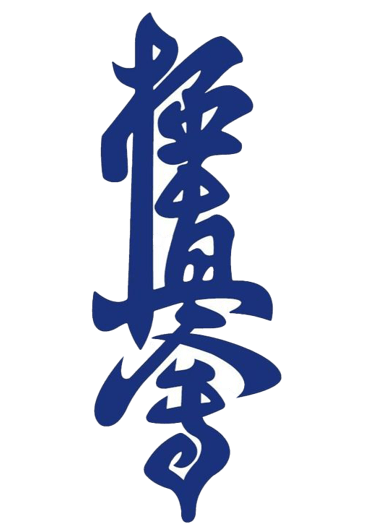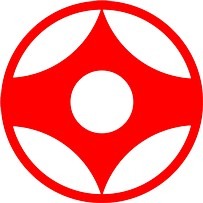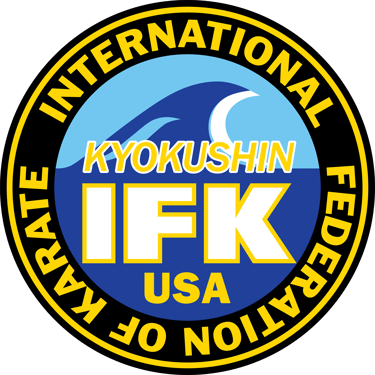Kyokushin Symbols (極真表象)
Kyokushinkai Kanji (極真会)
The kanji (漢字) worn on the left chest of the gi is a stylized brush calligraphy that reads “Kyokushinkai” (極真会), the name given by Sosai Mas Oyama to the karate style he founded. It is composed of three characters:
極 (Kyoku) – Ultimate
真 (Shin) – Truth
会 (Kai) – Association
Together, Kyokushinkai (極真会) means “The Association of the Ultimate Truth.” The kanji reflects the pursuit of personal truth through rigorous training and discipline.
Kanku Symbol (観空)
The Kanku is the emblem of Kyokushin and originates from the kata Kanku Dai (観空大), meaning “View the Sky.” In the kata, the hands are raised, and the fingers form a diamond-shaped window through which the sky is viewed.
The points at the top and bottom of the symbol represent the fingertips — symbolizing peak focus.
The thicker sides represent the wrists — symbolizing strength and power.
The open center circle represents the view through the hands — symbolizing infinite depth.
The outer circle enclosing the shape symbolizes continuity and circular motion.
This symbol expresses the core values of Kyokushin: strength, clarity, and infinite potential, all encircled by the never-ending path of improvement.
IFK Emblem
The International Federation of Karate (IFK) crest, worn on the upper right sleeve of the gi, features a rising wave drawn from the kata Saiha (最破), meaning “maximum break” or “smashing through.”
The wave represents:
Persistence in the face of adversity
Rising above challenges with patience and spirit
The essence of Osu no Seishin (押忍の精神) — the Spirit of Osu
It reminds all IFK members that, like a wave, we must continually move forward — resilient, focused, and powerful.






TRAINING
Join us for workshops and seminars conducted by skilled professionals and experienced educators from across the United States and internationally. USA-IFK prides itself on its no-politics approach. Click the appropriate button above for more information.
© 2025. All rights reserved.
